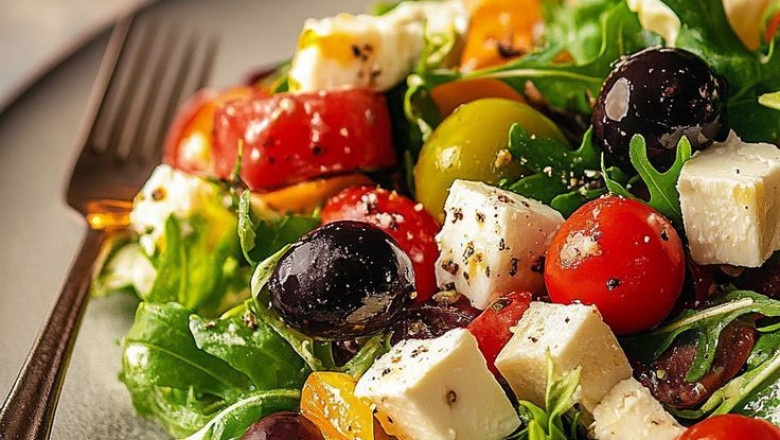views
Introduction: The Menu as Your Brand’s First Bite
A restaurant's menu is more than a list of dishes—it's a silent ambassador of your brand. In today’s competitive culinary landscape, an intelligently designed restaurant menu can spark appetite, guide customer choices, and elevate the overall dining experience. Whether you're running a fine-dining bistro in Downtown Dubai or a cozy café in Deira, your menu is where your culinary story begins.
Why Menu Design Matters More Than Ever
The digital era has transformed how guests interact with menus. QR codes, Instagrammable aesthetics, and short attention spans demand a fresh, strategic approach. A well-structured, visually captivating menu can:
-
Increase average order value
-
Highlight high-margin items
-
Reflect your cuisine’s identity
-
Enhance perceived value
-
Improve customer satisfaction
Popular Types of Restaurant Menus
-
À La Carte Menu
Every dish is priced individually. Best for upscale and fine-dining establishments. -
Prix Fixe Menu
A set menu with a fixed price for multiple courses—common in event catering and tasting menus. -
Table d’Hôte Menu
Offers a selection of meals at a set price with limited choices—often seen in banquet-style or daily specials. -
Digital or QR Code Menus
Post-pandemic, these are everywhere. Ideal for quick updates and contactless ordering. -
Chalkboard or Handwritten Menus
Rustic, flexible, and suitable for bakeries, delis, or farm-to-table concepts. -
Rotating or Seasonal Menus
Great for restaurants using local produce or showcasing culinary creativity.
Essential Sections Every Restaurant Menu Should Include
-
Starters / Appetizers
Bite-sized flavor to awaken the palate. -
Main Courses
The heart of the meal—should reflect variety, balance, and specialty dishes. -
Sides and Add-ons
Upsell with extras like truffle fries, sautéed greens, or artisan bread. -
Beverages
From craft sodas to signature mocktails and curated wines. -
Desserts
Sweet finishes often seal the deal—both in flavor and profit. -
Specials & Chef’s Recommendations
Spotlight your best or seasonal offerings to influence customer choice. -
Allergen & Dietary Notes
Transparency builds trust—use icons for gluten-free, vegan, nut-free options.
Design Elements to Consider for Your Restaurant Menu
-
Typography
Choose readable fonts with distinct hierarchy for headings, dish names, and descriptions. -
Color Palette
Use colors that reflect your theme—earthy tones for organic eateries, bold hues for fast food, or monochromes for luxury dining. -
Imagery and Icons
High-quality photos or elegant food icons can help decision-making—just avoid clutter. -
Layout
Organize logically—starters to desserts, light to heavy, beverages last. -
Material & Format
Laminate for durability, kraft paper for rustic charm, leather-bound for class. -
Spacing and Flow
White space is your friend—don’t overwhelm diners with dense text.
Psychological Tricks Behind Successful Menus
-
Anchor Pricing
List a premium dish first to make others seem reasonably priced. -
No Currency Signs
Prices without "$" or "AED" reduce cost-consciousness. -
Menu Engineering Grid
Categorize dishes into Stars (popular and high profit), Puzzles (low popularity but high profit), Plow Horses (popular but low margin), and Dogs (low popularity & margin) to refine your offerings. -
Decoy Effect
Place an overpriced item next to your high-margin dish to make the latter appear better valued.
Digital Menu Innovations for 2025
-
Interactive Screens
Touch displays allow visual dish previews and customization—great for fast-casual eateries. -
QR Menu Analytics
Track clicks and dwell time to understand which items draw the most interest. -
Integrated POS Systems
Real-time updates and kitchen syncing streamline orders and reduce errors. -
Augmented Reality Menus
Let customers view 3D dishes before ordering—turning menus into memorable experiences.
Trends in Restaurant Menu Design
-
Minimalist Layouts
Simple, elegant, and clean—ideal for fine dining or Scandinavian-inspired cafés. -
Sustainable Materials
Menus printed on recycled paper or bamboo for eco-conscious brands. -
Themed Menus
Seasonal events, cultural festivals, or limited-time menus attract new patrons. -
Multi-Language Menus
Crucial in Dubai’s multicultural scene—cater to tourists and expats alike. -
Social Media-Friendly Menus
Aesthetic layouts that photograph well enhance brand visibility online.
How to Write Descriptions That Sell
-
Be Descriptive But Concise
"Pan-seared salmon on a bed of herbed couscous with citrus glaze" evokes imagery and flavor. -
Use Sensory Words
Crispy, velvety, smoky, caramelized—make taste come alive. -
Tell a Story
Mention ingredient origins, chef’s inspiration, or traditional techniques to create emotional value.
Menu Mistakes to Avoid
-
Overloading with too many items
-
Inconsistent design elements
-
Using hard-to-read fonts or excessive italics
-
Neglecting dietary needs
-
Not updating prices regularly
-
Ignoring feedback on bestsellers or poor performers
Menu Printing and Presentation Tips
-
Always proofread—typos can be embarrassing and misleading.
-
Consider menu covers for long-lasting formats.
-
Keep digital versions updated for online orders and QR access.
-
Use waterproof or anti-bacterial coatings for hygiene in high-touch menus.
Cost of Designing and Printing a Menu in Dubai
-
Basic Designs: AED 200 – AED 500
-
Professional Custom Designs: AED 800 – AED 3,000
-
Printing Costs: AED 10 – AED 50 per menu, depending on material and size
-
Digital Menu Setup: AED 1,000+ for full integration with POS systems
Conclusion: A Menu Is a Marketing Tool—Not Just a List
Your restaurant menu sets the tone for the entire dining experience. It’s your chance to make a lasting first impression, boost sales, and reinforce your brand identity. With strategic planning, stunning visuals, and a deep understanding of your clientele, your menu can turn one-time visitors into loyal patrons—one delicious page at a time.














Comments
0 comment